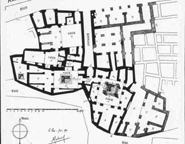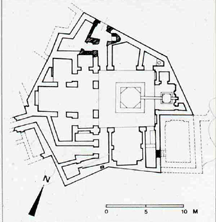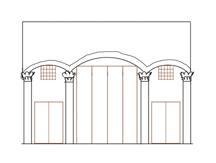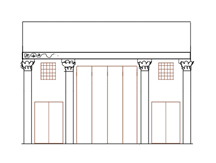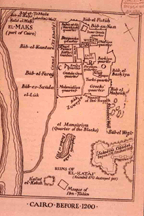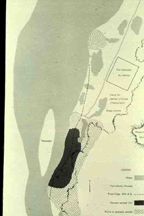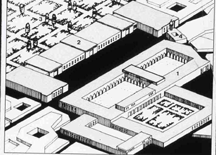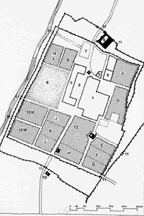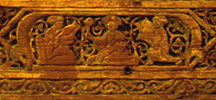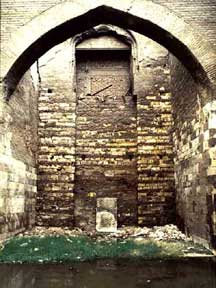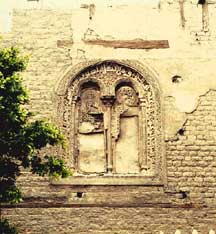AGA KHAN PROGRAM FOR ISLAMIC ARCHITECTURE
Course 4.611/4.613:
6-Fustat Houses: (Click on images to enlarge)
Al-Qata’i (the Wards or the Fiefs):
The new settlement built north of Fustat and al-‘Askar by Ahmad ibn-Tulun (868-884), the Turkish governor of Egypt sent by the Abbasids, who claimed semi-independence. The center of this new settlement was occupied by Ibn Tulun's palace complex, his hippodrome, and a stately mosque that still stands today.
Fustat Houses:
The name given to a group of houses excavated in the Fustat general area but dated to the Tulunid and early Fatimid periods.
The predominance of the majlis-type residences.
The Samarra model continued.
The plan of 6 Fustat houses around a street excavated in the early 20th century |
A Fustat house with a central court, a fountain, a chadirwan and a majlis |
Majlis:
An architectural unit which consists of a T-shaped space made of a large and deep central hall, flanked by two smaller, and shallower spaces. The three spaces are fronted with a portico (riwaq) which opens onto the courtyard. The façade of the majlis reflects the spatial arrangement through the existence of three doors, a central large one and two lateral small ones. The type is called in the texts al-Hiri (attributed to Hatra in Northern Mesopotamia) and is believed to have been imported from Samarra to Egypt by Ibn Tulun.
Possible reconstruction of a majlis facade |
Possible reconstruction of a majlis facade |
Fatimid Palatial Architecture in Cairo:
The Fatimids: an Isma‘ili dynasty whose founder claimed descent from Fatima, the daughter of the Prophet and wife of ‘Ali, hence the name. They established a counter-caliphate in Ifriqiya (modern day Tunisia), which was later expanded under al-Mu‘izz to include Egypt and southern Syria.
Al-Qahira (Cairo):
The new capital city of Egypt established north of Fustat by the Fatimids upon their conquest of the country in 969.
Cairo before 1200; Plan of the Fatimid City with the two palaces and Khitat (after Ravaisse) |
Plan of the new enclosure of Cairo north of al-Fustat |
Axonometric reconstruction by Nezar AlSayyad of the two Fatimid palaces in the center of Cairo |
Plan of Fatimid Cairo showing its expansion in the 11th century |
The Eastern Palace (969-72):
A huge enclosure with several monumental gates that contained a number of halls set within garden-courtyards.
The Western Palace (975-96):
Built by al-‘Aziz, al-Mu‘izz's son, as the more private caliphal palace across from the Eastern Palace. The two palaces were separated by an open parade ground called Bayn al-Qasrayn (Between the Two Palaces).
|
Remains of an iwan with a chadirwan in its center from the Western Palace incorporated into the Bimaristan of Al-Mansur Qalawun |
A double-arched window from the Western Palace incorporated into the Bimaristan of Al-Mansur Qalawun |
